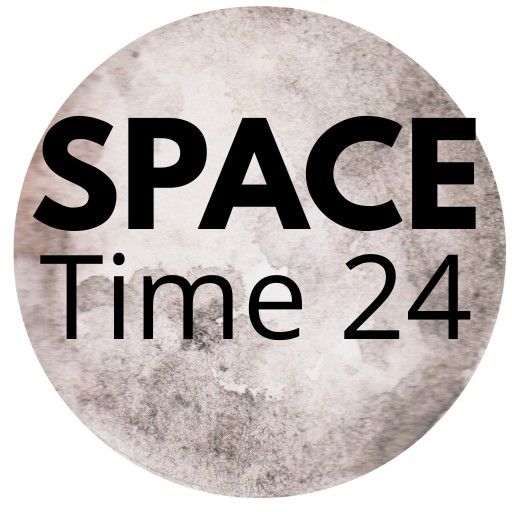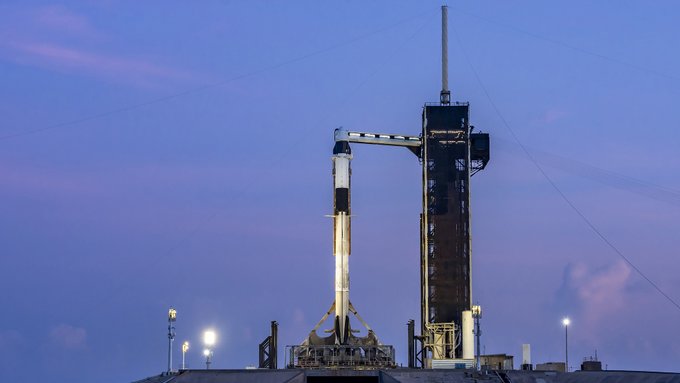 Dragon rolled out to pad 39A in Florida earlier today ahead of Tuesday’s launch of Axiom-4 mission (image credit SpaceX).
Dragon rolled out to pad 39A in Florida earlier today ahead of Tuesday’s launch of Axiom-4 mission (image credit SpaceX).
The Axiom-4 (Ax-4) mission marks another significant step in the evolution of commercial human spaceflight. Operated by Axiom Space in collaboration with NASA and SpaceX, this private crewed mission to the International Space Station (ISS) aims to expand the boundaries of space research, international cooperation, and commercial participation in low Earth orbit.
Let’s explore the primary goals and broader impact of the Axiom-4 mission.
Axiom-4 Mission: A New Chapter in Commercial Spaceflight
Axiom Space is leading efforts to develop the first commercial space station. Until that becomes a reality, missions like Ax-4 serve as vital practice grounds for training, experimentation, and integration with existing space infrastructure. The Ax-4 mission continues the precedent set by previous private missions such as Ax-1, Ax-2, and Ax-3.
With a diverse international crew onboard, Axiom-4 is not only a scientific mission but a diplomatic and commercial milestone.
Key Objectives of the Axiom-4 Mission
1. Scientific Research in Microgravity
- One of the core purposes of Ax-4 is to conduct a wide range of scientific experiments aboard the ISS. These experiments span multiple domains:
- Human physiology: Understanding how long-duration spaceflight affects the body.
- Materials science: Studying the behavior of materials in low gravity.
- Biotechnology: Developing space-based solutions for Earth-bound problems.
This research is intended to benefit both life on Earth and future long-term space missions, including missions to the Moon and Mars.
2. International Collaboration
The Ax-4 crew includes astronauts from various countries, highlighting the mission’s global nature. The goal is to build international partnerships that promote peaceful use of outer space and share the benefits of microgravity research with the broader scientific community.
3. Commercial Training and Experience
This mission provides valuable hands-on experience for commercial astronauts, many of whom represent national space agencies or private institutions. The training and mission experience they gain are crucial for the transition from government-led spaceflight to a more commercially driven model.
4. Education and Outreach
The mission also involves active engagement with students and educators through live Q&A sessions, STEM education initiatives, and outreach content. Axiom aims to inspire the next generation of scientists, engineers, and explorers by showing the real-world impact of science in space.
5. Testing Commercial Space Systems
Axiom-4 continues to validate systems and operations that will be critical for Axiom’s future private space station. This includes life-support systems, data handling, astronaut logistics, and in-space manufacturing technologies.
Why Axiom-4 Mission So Important For Future Space Exploration?
Axiom-4 isn’t just another mission to the ISS — it’s a bridge between today’s government-led missions and tomorrow’s fully private space stations. Each mission allows private crews to gain operational experience while contributing to global science and innovation.
With the ISS nearing retirement by the end of the decade, missions like Ax-4 are preparing the path for the next era of human presence in space.
Here’s a FAQ (Frequently Asked Questions) section for your Axiom-4 Mission Objectives article. It is written in SEO-friendly, human-like, copyright-free, and emoji-free style to enhance user engagement and search engine visibility.
Private spaceflight history on Wikipedia
Axiom-4 Mission FAQs
1. What is the Axiom-4 mission?
Axiom-4 (Ax-4) is a private crewed mission to the International Space Station (ISS), organized by Axiom Space in partnership with NASA and SpaceX. The mission aims to conduct scientific research, promote international collaboration, and pave the way for future commercial space stations.
2. Who is participating in the Axiom-4 mission?
The Axiom-4 mission includes a multinational crew of private astronauts and professional spacefarers from various countries. Each astronaut brings unique research goals and national objectives to the mission.
3. What kind of scientific experiments are being conducted during Ax-4?
The crew will perform experiments in human physiology, biotechnology, materials science, and environmental monitoring. These experiments aim to enhance our understanding of life in space and generate solutions applicable on Earth.
4. How does the Axiom-4 mission contribute to the future of commercial spaceflight?
Axiom-4 provides real-world training and experience for private astronauts, helping Axiom Space prepare for the launch of its own commercial space station. The mission tests critical systems, procedures, and collaborations that will define the next era of space exploration.
5. What is the significance of international collaboration in the Axiom-4 mission?
Ax-4 promotes global participation in space missions by involving astronauts and space agencies from different countries. This collaboration helps share knowledge, foster peace, and democratize access to low-Earth orbit research opportunities.
6. Will the Axiom-4 crew perform any outreach or educational activities?
Yes, the mission includes live communications with schools and universities, STEM-based outreach programs, and public engagement efforts aimed at inspiring the next generation of scientists and space professionals.
7. How does Axiom-4 differ from previous Axiom missions?
While all Axiom missions aim to establish a foundation for commercial spaceflight, Ax-4 introduces new international partners, updated research objectives, and further system testing aligned with the company’s long-term vision of operating a private space station.
You may also like this
How Crew Dragon Docked With 28000 Km/h Speedy Orbiting ISS? Complete Guide

